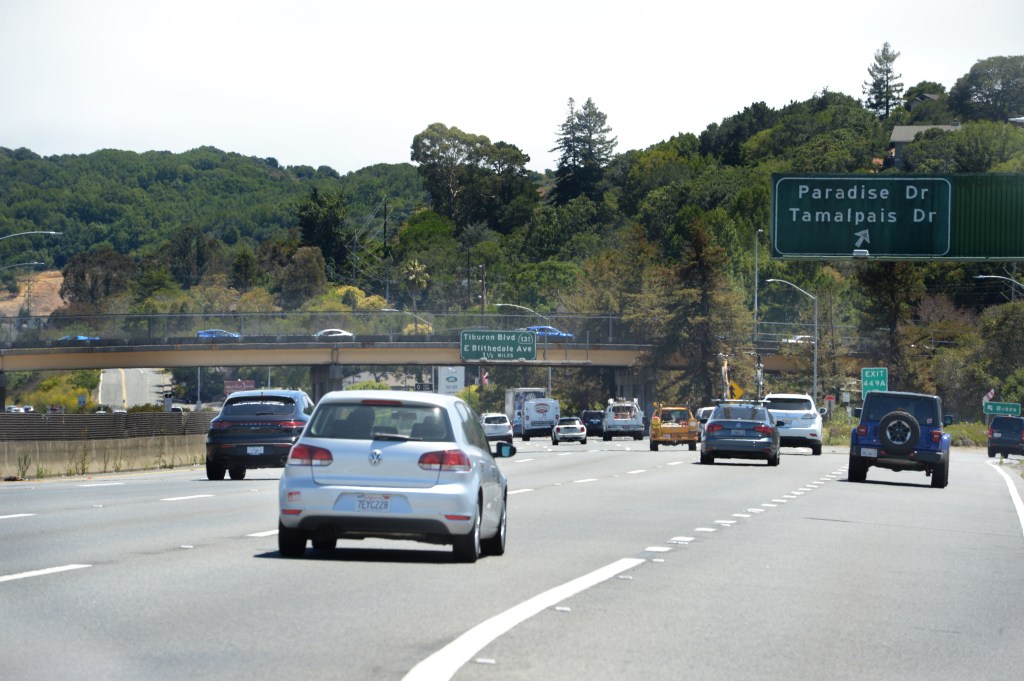Corte Madera has endorsed the Marin County “electrification roadmap” plan, which lays out ways to reduce emissions from natural gas.
The Town Council voted 4-1 on Tuesday to accept the plan. Natural gas vapors comprise 21% of the town’s greenhouse gas emissions.
“I think this is a fantastic effort,” said Councilmember Eli Beckman. “I would remind folks that this is a nonbinding document that is consistent with town policy and speaks towards addressing climate change, which of course is the only existential threat that our town faces between flooding and wildfire.”
Councilmember James Andrews voted against the plan, saying the state is becoming an energy “monoculture.”
Last August, the county released its advisory plan to switch buildings from natural gas to all electric, thus reducing greenhouse gas emissions. The “roadmap” outlines 10 key actions local jurisdictions can take to electrify buildings and proposes implementation by 2030.
“The main reason for doing electrification of course is to reduce our greenhouse gas emissions that come from the use of natural gas,” said Christine O’Rourke, the sustainability coordinator for the Marin Climate and Energy Partnership. “But there are several very important co-benefits as well.”
The switch is expected to improve public health and safety by eliminating harmful pollutants associated with natural gas, like formaldehyde, carbon monoxide, nitrous dioxide and unburned methane. When inhaled, these pollutants increase the risk of respiratory illnesses, asthma and heart disease.
“Health is your true wealth,” said Vice Mayor Rosa Thomas. “One of the things that impressed me was the idea that not having emissions in your home from gas powered appliances is a really big thing.”
Electrification also increases resilience in disasters, O’Rourke said. The electric grid is often up and running faster than natural gas infrastructure following an emergency like an earthquake, for example.
Mayor Pat Ravasio wondered how utility companies fit into the plan. O’Rourke said that by incentivizing electric buildings, especially financially, utility companies will start to scale back their natural gas infrastructure over time. She said the town can make sure there is enough capacity on the electric grid to meet demand, and inform companies about big projects.
Councilmember Fred Casissa asked how much flexibility the town has if it has to “change course.” The county plan does not force municipalities to implement its suggestions, just lays out a way to reach the goals. Marin has a goal of reducing emissions by 40% below the 1990 levels by 2030.
Phoebe Goulden, the town’s climate official, said staff will pull some items listed in the county roadmap to bring to the Town Council. This year, two items are on the docket: a building code update that includes green codes, and permit discounting programs that could incentivize electrification.
Beckman pointed out three items in the roadmap: streamlined permitting; easy access to information and financial assistance for residents; and rebuilding the trade workforce with a focus on green buildings. He said he was impressed the document addresses these key points.
Ravasio pointed to the urgency of climate change. She said the dangers of natural gas emissions to humans and the planet have largely been “obfuscated” by the fossil fuel industry.
“Our safe number is 350 parts per million, and I think the big measuring stick out in Maui says we’re now at about 420,” Ravasio said, referring to carbon dioxide levels. “It’s no longer a question of if you believe in climate change, the big question is if you understand climate change.”
